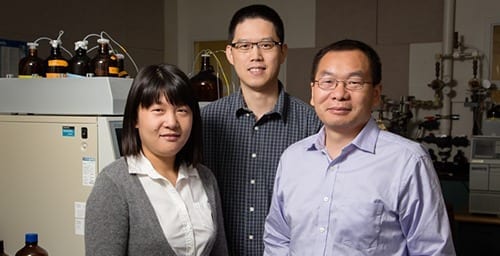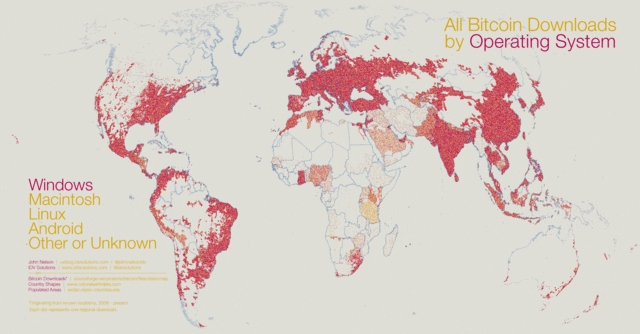
“This opens the door to a much wider range of biocompatible implant materials”
Researchers from North Carolina State University, the University of North Carolina at Chapel Hill and Laser Zentrum Hannover have discovered that a naturally-occurring compound can be incorporated into three-dimensional (3-D) printing processes to create medical implants out of non-toxic polymers. The compound is riboflavin, which is better known as vitamin B2.
“This opens the door to a much wider range of biocompatible implant materials, which can be used to develop customized implant designs using 3-D printing technology,” says Dr. Roger Narayan, senior author of a paper describing the work and a professor in the joint biomedical engineering department at NC State and UNC-Chapel Hill.
The researchers in this study focused on a 3-D printing technique called two-photon polymerization, because this technique can be used to create small objects with detailed features – such as scaffolds for tissue engineering, microneedles or other implantable drug-delivery devices.
Two-photon polymerization is a 3-D printing technique for making small-scale solid structures from many types of photoreactive liquid precursors. The liquid precursors contain chemicals that react to light, turning the liquid into a solid polymer. By exposing the liquid precursor to targeted amounts of light, the technique allows users to “print” 3-D objects.
Two-photon polymerization has its drawbacks, however. Most chemicals mixed into the precursors to make them photoreactive are also toxic, which could be problematic if the structures are used in a medical implant or are in direct contact with the body.
But now researchers have determined that riboflavin can be mixed with a precursor material to make it photoreactive. And riboflavin is both nontoxic and biocompatible – it’s a vitamin found in everything from asparagus to cottage cheese.
Go deeper with Bing News on:
3-D Printing of Medical Implants
- 3D printed surgical implants may support cures for blindness, chronic pain and neurological diseases
Clever bio-inks that sit inside the human body and restore damaged neurons could cure a whole swathe of diseases in the next 20 years: conditions that have baffled scientists and clinicians for ...
- 3D Printing Medical Devices Market Set to Grow to USD 10.67 Billion by 2031 Owing to Growing Demand for Personalized Medical Solutions
D Printing Medical Devices Market Set to Grow to USD 1067 Billion by 2031 Owing to Growing Demand for Personalized Medical Solutions ...
- Global 3D Printed Medical Implants Industry
Global 3D Printed Medical Implants Industry is projected to reach worth of US$ 2,494.5 million by 2032, expanding at a CAGR of 12.5% by 2032 ...
- 3-D Printed Cranial Implant Gets 510(k) Clearance
D-printed PEEK implants using the EXT 220 MED were successfully demonstrated in nearly 40 cranioplasties across Europe.
- How 3D printing is changing the way doctors approach difficult surgeries
The technology is revolutionizing both the way medical professionals approach surgical procedures and the recovery time for patients.
Go deeper with Google Headlines on:
3-D Printing of Medical Implants
[google_news title=”” keyword=”3-D Printing of Medical Implants” num_posts=”5″ blurb_length=”0″ show_thumb=”left”]
Go deeper with Bing News on:
Biocompatible implant materials
- Biocompatible Polymers Market Poised for Explosive Growth: Reaching US$ 1.8 Billion by 2033
In 2023, the biocompatible polymers market is expected to be worth US$ 957 million. The market is expected to reach US$ 1,847.7 million by 2033, expanding at a 6.8% CAGR throughout the forecast period ...
- 3D printed surgical implants may support cures for blindness, chronic pain and neurological diseases
Clever bio-inks that sit inside the human body and restore damaged neurons could cure a whole swathe of diseases in the next 20 years: conditions that have baffled scientists and clinicians for ...
- Saline vs. Silicone Breast Implants
In 2022, the Food and Drug Administration — the government agency that, among other responsibilities, oversees which medicines and medical devices are available in the United States — issued ...
- What you need to know about pop on veneers
Everyone wants a great smile, but not everyone has thousands of dollars to spend on dental work. That’s where veneers come in. In this article, we’ll explore different types of veneers, focusing on ...
- 3D Printing Medical Devices Market Set to Grow to USD 10.67 Billion by 2031 Owing to Growing Demand for Personalized Medical Solutions
D Printing Medical Devices Market Set to Grow to USD 1067 Billion by 2031 Owing to Growing Demand for Personalized Medical Solutions ...
Go deeper with Google Headlines on:
Biocompatible implant materials
[google_news title=”” keyword=”biocompatible implant materials” num_posts=”5″ blurb_length=”0″ show_thumb=”left”]










